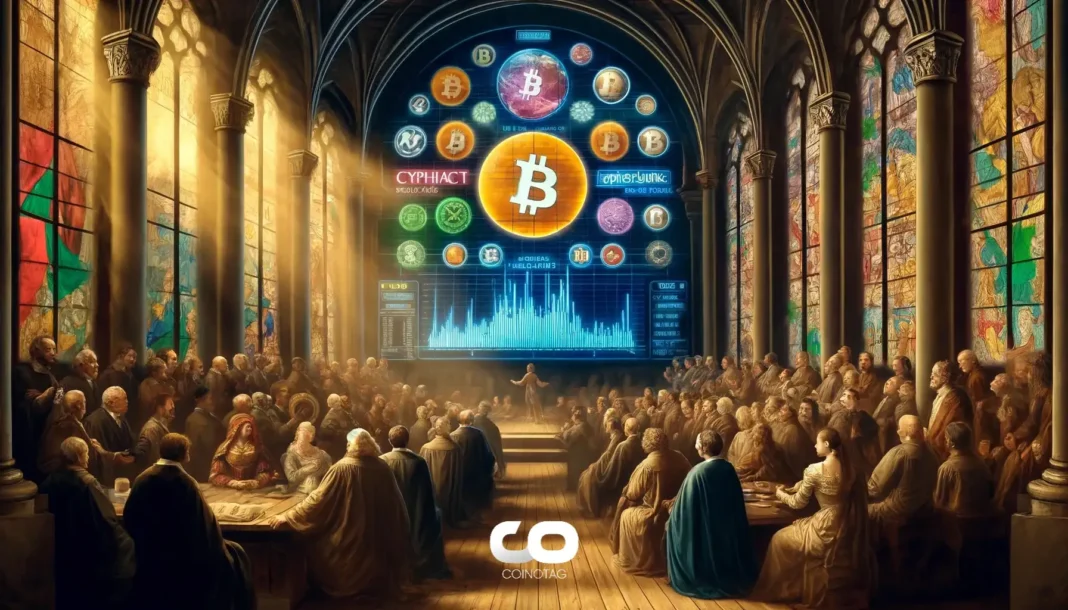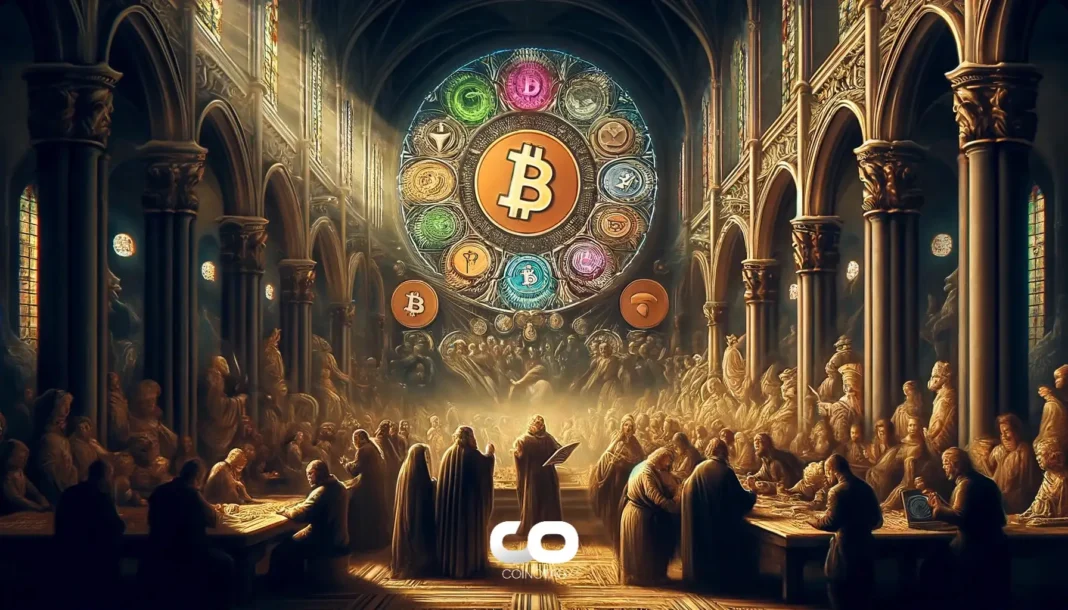| COINOTAG recommends • Exchange signup |
| 💹 Trade with pro tools |
| Fast execution, robust charts, clean risk controls. |
| 👉 Open account → |
| COINOTAG recommends • Exchange signup |
| 🚀 Smooth orders, clear control |
| Advanced order types and market depth in one view. |
| 👉 Create account → |
| COINOTAG recommends • Exchange signup |
| 📈 Clarity in volatile markets |
| Plan entries & exits, manage positions with discipline. |
| 👉 Sign up → |
| COINOTAG recommends • Exchange signup |
| ⚡ Speed, depth, reliability |
| Execute confidently when timing matters. |
| 👉 Open account → |
| COINOTAG recommends • Exchange signup |
| 🧭 A focused workflow for traders |
| Alerts, watchlists, and a repeatable process. |
| 👉 Get started → |
| COINOTAG recommends • Exchange signup |
| ✅ Data‑driven decisions |
| Focus on process—not noise. |
| 👉 Sign up → |
- The cryptocurrency sector recently saw a noteworthy issue regarding Bitcoin’s transactional efficiency.
- CryptoQuant CEO Ki Young Ju brought to light the stagnation in Bitcoin’s transaction velocity.
- His insights have sparked a discussion on Bitcoin’s role as digital gold versus a transactional currency.
Bitcoin’s Transaction Velocity Hits a Standstill: Insights and Implications for the Crypto Market
Bitcoin Velocity Stagnates
CryptoQuant CEO Ki Young Ju has pointed out that Bitcoin’s transaction velocity has reverted to levels seen in 2011. This trend indicates that Bitcoin’s current usage is highly static and remains far from the original peer-to-peer transaction vision set out by Satoshi Nakamoto. The concept of “Digital Gold” has become the prevailing narrative, as institutions tend to hoard Bitcoin for its store of value rather than use it for frequent daily transactions.
The Shift Towards Digital Gold
Institutions and individual investors alike now view Bitcoin as a long-term store of value rather than a means for everyday transactions. According to Ju, Bitcoin’s velocity chart shows limited activity, suggesting that while the asset has gained tremendous value, its fluidity in daily commerce is limited. This poses questions about its practical utility in mainstream financial activities compared to other digital currencies.
Technical and Functional Limitations
The challenges facing Bitcoin payment systems are multifaceted. Zach Rynes, a community liaison for Chainlink, delved into the technical limitations specific to Bitcoin. Two major issues were highlighted: the risk of volatility and the accuracy of payments. In contrast, platforms like Ethereum offer solutions for these problems through smart contracts and programmability, which mitigate volatility and ensure payment accuracy.
| COINOTAG recommends • Professional traders group |
| 💎 Join a professional trading community |
| Work with senior traders, research‑backed setups, and risk‑first frameworks. |
| 👉 Join the group → |
| COINOTAG recommends • Professional traders group |
| 📊 Transparent performance, real process |
| Spot strategies with documented months of triple‑digit runs during strong trends; futures plans use defined R:R and sizing. |
| 👉 Get access → |
| COINOTAG recommends • Professional traders group |
| 🧭 Research → Plan → Execute |
| Daily levels, watchlists, and post‑trade reviews to build consistency. |
| 👉 Join now → |
| COINOTAG recommends • Professional traders group |
| 🛡️ Risk comes first |
| Sizing methods, invalidation rules, and R‑multiples baked into every plan. |
| 👉 Start today → |
| COINOTAG recommends • Professional traders group |
| 🧠 Learn the “why” behind each trade |
| Live breakdowns, playbooks, and framework‑first education. |
| 👉 Join the group → |
| COINOTAG recommends • Professional traders group |
| 🚀 Insider • APEX • INNER CIRCLE |
| Choose the depth you need—tools, coaching, and member rooms. |
| 👉 Explore tiers → |
Ethereum as a Viable Alternative
Ethereum’s smart contracts enable automatic conversion of crypto assets into stablecoins, which significantly reduces the volatility risk for merchants. Additionally, Ethereum’s structure allows for seamless validation and reconciliation of payments, which simplifies the process for regular transactions. On the other hand, Bitcoin’s Unspent Transaction Output (UTXO) model lacks this flexibility, posing challenges for implementing similar features on its blockchain.
Conclusion
While Bitcoin’s value as a “Digital Gold” solidifies, its functional utility for everyday transactions remains debatable. Analysts like Rynes and Ju emphasize the necessity for innovation and adaptation if Bitcoin is to fulfill its original transactional purpose effectively. Although the Lightning Network offers some hope for resolving Bitcoin’s payment issues, it is clear that BTC payments may not go mainstream without significant technological advancements. The dichotomy between Bitcoin’s role as an investment asset and its utility for transactions will continue to shape its future in the evolving digital economy.
| COINOTAG recommends • Exchange signup |
| 📈 Clear interface, precise orders |
| Sharp entries & exits with actionable alerts. |
| 👉 Create free account → |
| COINOTAG recommends • Exchange signup |
| 🧠 Smarter tools. Better decisions. |
| Depth analytics and risk features in one view. |
| 👉 Sign up → |
| COINOTAG recommends • Exchange signup |
| 🎯 Take control of entries & exits |
| Set alerts, define stops, execute consistently. |
| 👉 Open account → |
| COINOTAG recommends • Exchange signup |
| 🛠️ From idea to execution |
| Turn setups into plans with practical order types. |
| 👉 Join now → |
| COINOTAG recommends • Exchange signup |
| 📋 Trade your plan |
| Watchlists and routing that support focus. |
| 👉 Get started → |
| COINOTAG recommends • Exchange signup |
| 📊 Precision without the noise |
| Data‑first workflows for active traders. |
| 👉 Sign up → |
| COINOTAG recommends • Members‑only research |
| 📌 Curated setups, clearly explained |
| Entry, invalidation, targets, and R:R defined before execution. |
| 👉 Get access → |
| COINOTAG recommends • Members‑only research |
| 🧠 Data‑led decision making |
| Technical + flow + context synthesized into actionable plans. |
| 👉 Join now → |
| COINOTAG recommends • Members‑only research |
| 🧱 Consistency over hype |
| Repeatable rules, realistic expectations, and a calmer mindset. |
| 👉 Get access → |
| COINOTAG recommends • Members‑only research |
| 🕒 Patience is an edge |
| Wait for confirmation and manage risk with checklists. |
| 👉 Join now → |
| COINOTAG recommends • Members‑only research |
| 💼 Professional mentorship |
| Guidance from seasoned traders and structured feedback loops. |
| 👉 Get access → |
| COINOTAG recommends • Members‑only research |
| 🧮 Track • Review • Improve |
| Documented PnL tracking and post‑mortems to accelerate learning. |
| 👉 Join now → |







